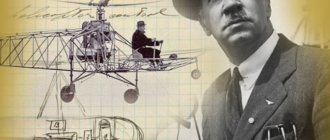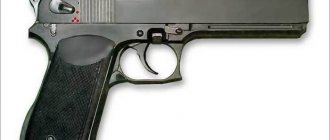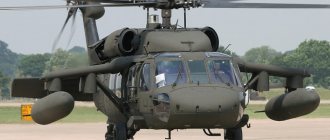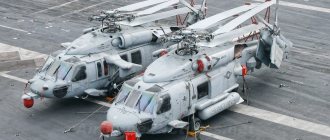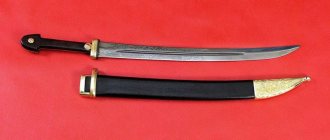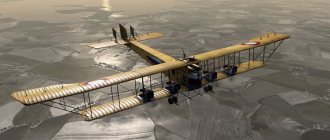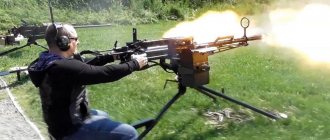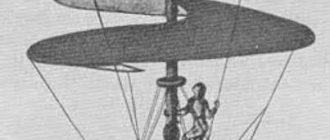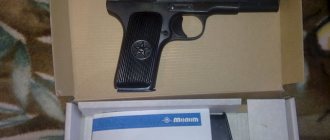Today, multi-ton airplanes and helicopters soaring in the sky have become a familiar sight for ordinary people. However, just over 100 years ago, when only researchers and admirers of Leonardo da Vinci and Jules Verne could imagine such a miracle, there were only a few daredevils ready to make the dream of heaven come true.
Among the pioneers of aircraft construction, one of the most significant and key figures was our compatriot, the great Russian aircraft designer, who was forced to flee from the Bolshevik rule to America, Igor Ivanovich Sikorsky. The biography of the aircraft designer was not easy. He experienced ups and downs, life in a foreign land and great recognition. It all started in the Russian Empire.
Youth
Igor Ivanovich Sikorsky was born on May 25, 1889 in Kyiv, into an intelligent family. Father - Ivan Alekseevich Sikorsky, was a famous psychiatrist and professor at Kyiv University. He was Russian by origin.
Nationality was an important factor for Sikorsky’s father, who was a member of the Union of the Russian People, a right-wing Black Hundred organization, and even acted as an expert and witness for the prosecution in the Beiliss case (when the Black Hundreds tried to accuse a Jew of the ritual murder of a boy and provoke anti-Semitic uprisings).
Mother, Maria Stefanovna, was a doctor by training. She tried from an early age to give her son an education and instill a love of culture and science. It was from her that her son learned about the “flying” experiments of Leonardo da Vinci.
As a boy, Igor Sikorsky studied at the Kyiv gymnasium, but soon he was attracted by the environment of naval officers and he entered the Naval Cadet Corps. After graduating from general education classes, Sikorsky decides to enter a technical institute.
In Russia, torn apart by revolutionary events, educational institutions were closed and there was no opportunity to get an education at home.
17-year-old Igor leaves for Paris and enters a technical school, and a year later returns to Kyiv and continues his studies at the local polytechnic institute. However, overwhelmed by the idea of building aircraft, Sikorsky abandoned his studies.
Memory
The name of Sikorsky remained in the memory of descendants.
- Today, streets and squares, the Tu-160 long-range bomber and the aerospace lyceum in Ukraine, the astronomical union and a crater on the Moon, an asteroid and the Kiev airport bear his name.
- The man became the author of the book “Heaven and Heavens”.
- In 1979, the film “Poem of Wings” premiered, and in 2012, the film “Knight of the Sky” was released, which told about the life of an aircraft designer.
- Ekaterina Nizamova wrote a book about the life and works of Igor Ivanovich, naming the work in honor of the developer.
First designs
From early childhood, Sikorsky dreamed of designing flying cars. Most of all, he was interested in the topic of vertical flight, when the device can not only glide, but also hover in the air.
At the age of 12, he built his first helicopter model.
At the age of 20, having gained experience and visited French and German specialists, Sikorsky designs the first helicopter in Russia capable of conducting tests, including with a live pilot.
However, the lifting power of the first models was insufficient and they could only lift their own small weight. They were destined to become exhibition pieces.
In parallel with this, Sikorsky designed a snowmobile - a self-propelled sled equipped with a pushing propeller.
All this gave him experience in creating propellers, which he could subsequently use in the construction of aircraft. The first designs came out of a barn at the Kiev airfield, where he worked with his friend and student of the Kyiv Polytechnic F. I. Bylinkin.
Sikorsky took off for the first time on his own biplane BIS-2 (Bylinkin, Jordan, Sikorsky) on June 3, 1910.
A year later, the new model BIS-5 was already able to conduct demonstrations with passengers. On it, Sikorsky passed his exams and received a pilot’s license.
Also in 1911, the C-6 model was released, accommodating 3 passengers. Sikorsky set a world speed record with it. The modernized model of the S-6-A aircraft received a gold medal at the Moscow exhibition.
An inspiring journey
A few years later, when Igor was vacationing in Germany with his father, he learned about the first airship launches carried out by Count von Zeppelin. He also read about the successful flights of the Wright brothers and was amazed that the newspaper reported such a great achievement in small print on the back page. At that moment, Sikorsky decided to devote his life to aviation. His special goal was to develop a device capable of hovering over one point or flying in any desired direction - a helicopter.
He immediately began conducting his experiments in a small hotel room, creating a rotor and measuring its lift. Upon returning to Kyiv, Igor left the polytechnic institute and began extensive research in the nascent branch of science. He was not yet twenty, he had great enthusiasm and many ideas, but little practical experience and money.
Confession
Having not completed his studies at the institute, 23-year-old Sikorsky comes to St. Petersburg at the invitation of the Russian-Baltic Wagon Works (RBVZ).
In addition, Sikorsky receives the position of chief engineer of the naval aviation being established. In the capital, he is completely immersed in aircraft construction.
During his work at RBVZ, new innovative aircraft were produced one after another: seaplanes, training models, biplanes and monoplanes.
Sikorsky aircraft participated in international exhibitions, won prizes and were sold to foreign countries. He received great support from the Chairman of the RBVZ, M.V. Shildovsky.
Models S-10 and S-12 began to be produced and delivered to the front and navy. The S-10 reconnaissance aircraft occupied the main place in the armament of the navy at the beginning of the First World War.
Between 1912 and 1914, the twin-engine Grand aircraft, the first of its kind in the world, was created; it was followed by the modification “Russian Knight” - already a four-engine aircraft.
The plane became the forefather of all heavy aircraft construction. Nikolai 2 himself wanted to inspect it and climbed into the cabin along with Sikorsky. For his services, the tsar awarded the young aircraft designer a personalized watch.
Homecoming
...For many years the name of Mr. Helicopter, as Igor Sikorsky was called in the world, was kept silent in his homeland - how could it be otherwise: a white emigrant, a favorite of the royal family! In popular literature, even the authorship of “Ilya Muromets” was attributed to some “group of young RBVZ designers.” The information ice began to melt in the late eighties: articles appeared in mass media that objectively assessed the activities of Igor Sikorsky, and books about him were published. In 1998, a memorial plaque was unveiled at KPI in honor of the famous designer. She decorated the building of the former research workshops, in which a former student of the institute shed a lot of labor sweat. The State Polytechnic Museum of Ukraine is now open there. The best students of the KPI Faculty of Aerospace Systems annually receive a scholarship named after. Igor Sikorsky. On the territory of the university they are finishing the construction of the world’s first monument to an outstanding designer, on which the honored sculptor of Ukraine Nikolai Oleynik embossed the words of Igor Sikorsky, spoken by him in his declining years: “I take my hat off to my alma mater, which prepared me to conquer the sky.” Consequently, the great fellow countryman returns home, to his native Kyiv, to his alma mater, to inspire new generations of polytechnic students to realize fantastic plans and ideas.
The creation of the giant “Ilya Muromets”
While still a student, Sikorsky became infected with the idea of creating a giant aircraft. In those days, such reasoning was not taken seriously and seemed fantastic.
As time passed, due to the successful launch of the Vityaz, at the end of 1913, the 19-meter Ilya Muromets S-22, which he dreamed of as a child, appeared.
Until 1917, this aircraft was considered the largest in the world.
In the spring of 1914, it was redesigned (floats attached) into a seaplane. The second model of the aircraft made a breakthrough, lifting ten passengers to a height of 2000 meters and transporting them along the St. Petersburg-Kyiv route and back.
In the era of the birth of aviation, when an active race of aircraft designers was going on all over the world and records were changing one after another, in Russia “Ilya Muromets” had no equal until 1923.
Since 1915, “Ilya Muromets” went into mass production. During the war years, the country received over 80 heavy airliners of various modifications.
First World War
During the First World War, the Russian army was armed with not only the multi-engine Muromets, but also other Sikorsky airplanes: light fighters, a naval reconnaissance aircraft, a light reconnaissance fighter, a twin-engine fighter-bomber and an attack aircraft - an almost complete fleet of all types of military aircraft. At the same time, work on improving the Muromtsev continued. Adjustments to the design were made based on the results of the combat use of airplanes and taking into account the wishes of the crews. That is why Sikorsky spent a significant part of his time not at the plant, but directly in the combat areas. It is known that the S-22 (the official name of “Ilya Muromets”) had more than two dozen modifications. Their characteristics amazed their contemporaries: the span of the upper wing (Ilya Muromets was a biplane) reached 32 meters, the length of the fuselage in different modifications ranged from 17.1 to 23.5 meters, take-off weight - over 5 tons, speed in horizontal flight - 140 km /h, flight altitude - 4 thousand meters. The Muromets had specially designed suspension devices for bombs and were equipped first with a mechanical and later with an electric bomb release and an optical sight. According to archival data, a total of 85 such vehicles were built by order of the military department.
Emigration
Since 1917, the work of the RBVZ has practically ceased. The country, gripped by revolutionary unrest, strikes and rallies, could not create conditions for large-scale production.
When the Bolsheviks finally came to power, Sikorsky could have become a victim of the “Red Terror”. The devoted monarchist often received threats.
The final impetus for emigration was a warning from one of the factory workers.
He came to Igor Ivanovich’s home and said that his name was already on the execution list.
First, Sikorsky went to Paris, where he began building the French version of Ilya Muromets at Allied factories, then, in 1919, he moved to the United States.
He left behind a wife in Russia, who refused to emigrate, and a small daughter. There, during the era of the Great Depression, he began a period of struggle for survival.
At first, he worked part-time as a teacher of mathematics and astronomy among emigrants, then, 4 years later, together with a number of Russian engineers, he opened an aviation design department.
The company designed and sold light biplanes, and its financial position was unstable. The outstanding composer Sergei Rachmaninov played an important role in Sikorsky's life. He visited Igor Ivanovich’s enterprise and had a fifteen-minute conversation with him.
Sikorsky expected Rachmaninov to donate about $200 to him, but instead received a check for $5,000—a huge amount of money at that time. When the economic condition of Sikorsky's company stabilized, he returned the money to Rachmaninov and even added interest.
A breakthrough for the company was the design of the twin-engine seaplane S-38. Reliable amphibians walked on water easily and orders began to arrive regularly to the Sikorsky company.
In 1929, Sikorsky Aero Engineering Corporation became part of United Technologies Corporation, one of the largest industrial corporations in America, of which it remained a part until 2015.
Igor Sikorsky was involved in charity work, building Russian schools, clubs, and Orthodox churches. Founded the Tolstoy and Pushkin foundations. In Stratford, where Sikorsky lived, a large Russian community was created.
There, in America, he remarried a Russian girl, Elizaveta Semenova. The marriage produced four sons. Being a family of emigrants, they rejected seemingly tempting offers from the Soviet leadership to return to their homeland.
So, Joseph Stalin personally wrote a letter to Sikorsky with the content “come back, your homeland needs you.”
The reason for this was hostility to the “red” regime and the tragic fate of many scientists disliked by the authorities in the USSR.
Personal life
For the first time, Igor Sikorsky married Olga Simkovich in his youth. The wife gave birth to a daughter, and after the divorce the girl remained with her mother. In 1923, during their emigration from their homeland to the United States, the inventor’s sisters brought the child to their father.
In America, Igor established his personal life, becoming the husband of Elizabeth Semion (Elizaveta Semenova), a native of the Far East who fled to the United States. The wedding took place in New York. The wife gave her husband four children and sons. Two of them, Sergei Sikorsky and Igor Sikorsky, were related to aeronautics. The first was vice president of special projects at Sikorsky Aircraft. The second became a businessman, lawyer and aviation historian.
"American Clipper" by Sikorsky
In 1931, Sikorsky launched the S-40 American Clipper flying boat. It was a heavy amphibious aircraft capable of transporting people across the ocean.
Liners of this type served Pan-American postal and passenger transportation along Pacific routes. The most outstanding models of the series were the high-speed airliners S-42, S-43 and S-44. Their prototype, in many ways, was the early Grand, produced in Tsarist Russia.
However, the S-44 boat, created in 1937, ended the series and the demand for flying boats decreased. By this time, Sikorsky had managed to create 15 aircraft models.
And back to the helicopters
In 1938, Igor Ivanovich Sikorsky, together with his friend Charles Lindbergh, visited Hitler's Germany. There he goes to the helicopter manufacturing plant of the German engineer Focke and gets acquainted with innovations in this field.
He returned to the USA with a strong desire to return to the interest of his youth and begin producing helicopters.
By that time, design thought had already achieved certain successes in the field of helicopter engineering. Theoretical developments in technology and aerodynamics allowed 50-year-old Igor Ivanovich to realize his long-time dream and he began designing a single-rotor helicopter VS-300.
The US government allocated $3 million for these developments, and on May 20, 1940, the premiere of the first Sikorsky helicopter took place.
.
The device flew back and sideways, spinning in place. The only thing was that he couldn't fly forward. Sikorsky, who flew the helicopter himself, was very pleased with the tests and said that all the shortcomings were easy to fix.
The modified version was called R-4. The American government had no doubt about the quality of the models and ordered 400 units for the army, which were used during the Second World War.
The Sikorsky helicopter went into serial production, and the design type became a classic model for the entire helicopter industry.
Sikorsky devoted the next 25 years of his life to helicopter manufacturing. He developed amphibious helicopters, crane helicopters, high-lifting helicopters, double-decker helicopters, etc. In total, more than 50 types.
His machines marked the beginning of a new age of aircraft design.
They were used in military and civil aviation, as well as for humanitarian purposes. The S-58 model served for rescue operations during the Vietnam War and was in demand in many countries around the world.
The S-65 model was a large, heavy helicopter capable of transporting a large group of passengers, such as a landing party, at high speed.
Since 1958, Igor Ivanovich Sikorsky has retired, reserving only the role of an advisor to the company. He devotes his life to religious and philosophical works, supporting his charitable endeavors and hobbies such as shooting. He loved to surprise his guests with his ability to knock out a candle flame with a pistol shot.
Shortly before his 75th birthday, Sikorsky gave an interview to the Voice of America, in which he conveyed a message of peace to his homeland and expressed hope that the wars and turmoil in his beloved Russia would end. Died October 26, 1972 in Easton.
Death
The aircraft designer died in 1972 in the city of Easton, located in Connecticut. The cause of death of the founder of the helicopter industry was diseases associated with old age. He was buried in the cemetery of St. John the Baptist.
Inventor Igor Sikorsky.
On June 27, 1931, he received a patent for the creation of a helicopter. Published by Science and God Thursday, June 27, 2022
Aircraft designer Igor Sikorsky
Living abroad, Igor Sikorsky called himself Russian and supported the development of his native culture in America. After the death of the emigrant, the Orthodox Church, Russian school and Russian opera founded by him remained. The first photos of the inventor began to appear in textbooks only 30 years after his death.
Aircraft created by Sikorsky
Igor Ivanovich left his contribution to history in the form of the scientific school he created back in the tsarist years, which provided many personnel; a company that successfully operates in the USA to this day and many types of airplanes and helicopters that have become classic models for all world aviation.
The main models of Sikorsky's authorship are considered:
| Model | Description | Year of issue |
| S-6 | Three-seat biplane | 1912 |
| S-21 Russian Knight | Large four-engine biplane | 1913 |
| S-22 Ilya Muromets | Large four-engine amphibious biplane | 1913 |
| S-29 | Twin-engine biplane | 1924 |
| S-42 Clipper | In-demand flying boat | 1934 |
| VS-300 | Experimental helicopter design | 1939 |
| VS-44 Excambian | Flying boat | 1942 |
| R-4 | First production helicopter | 1942 |
| S-58 | Transport helicopter | 1954 |
| S-65 | Heavy transport helicopter | 1964 |
